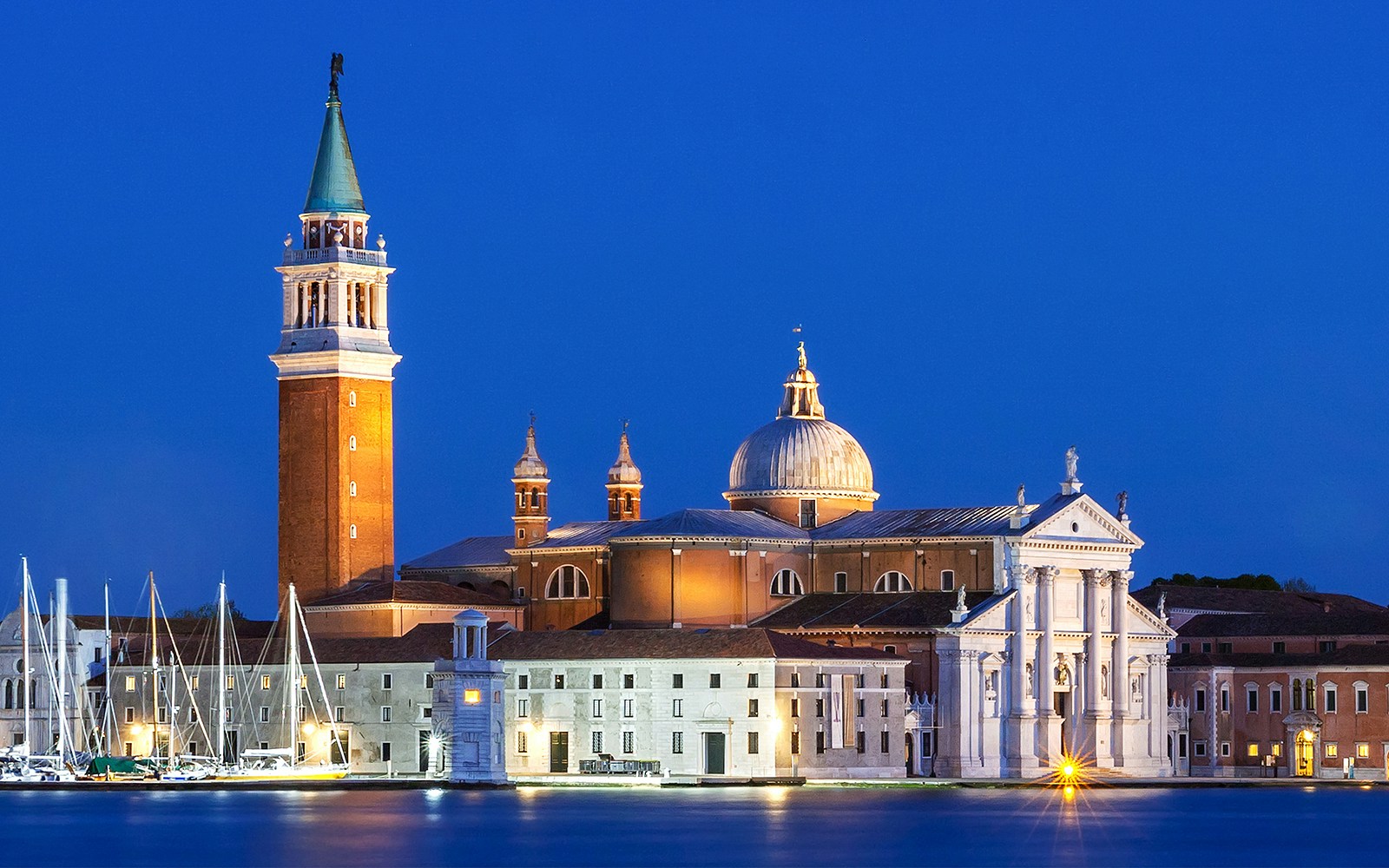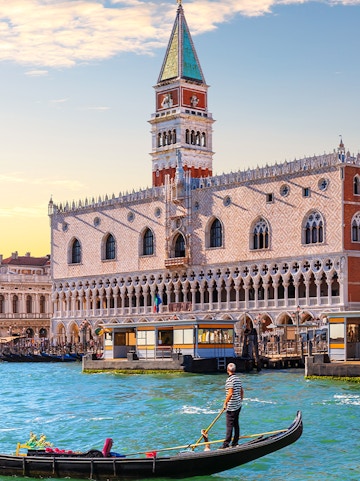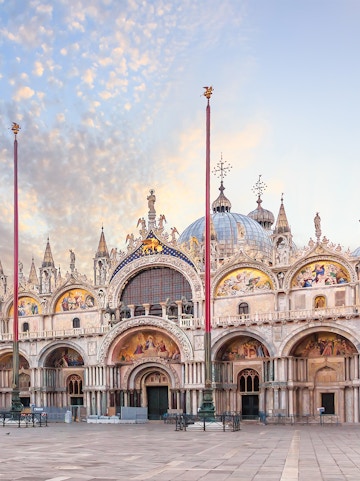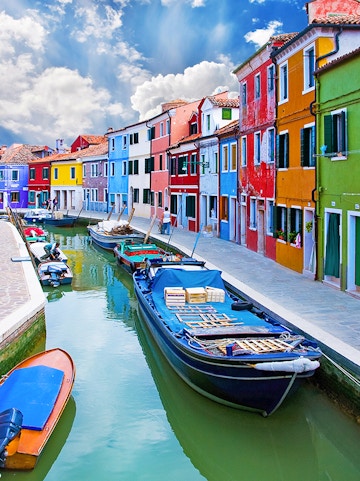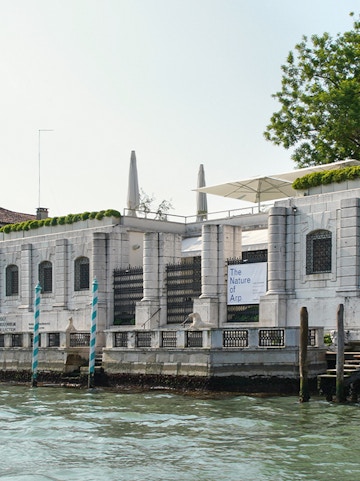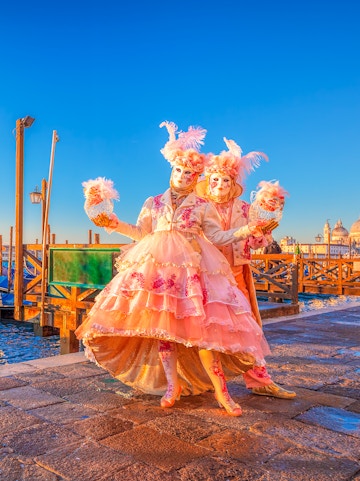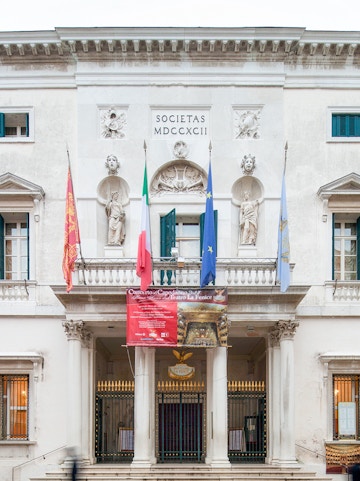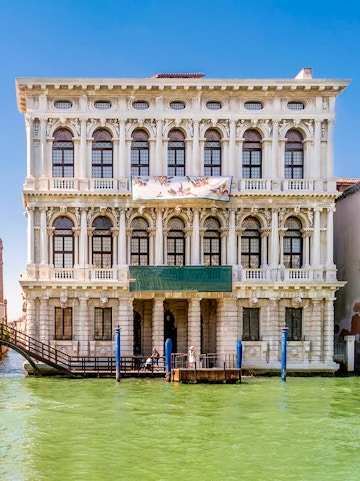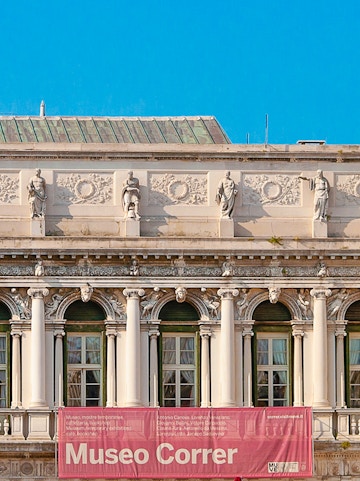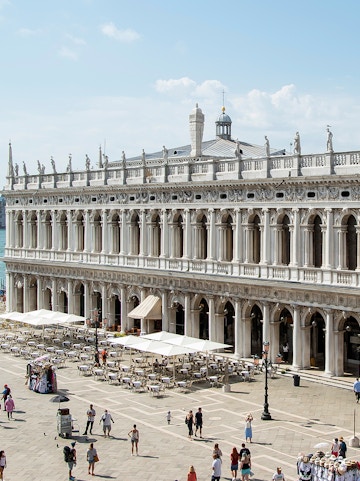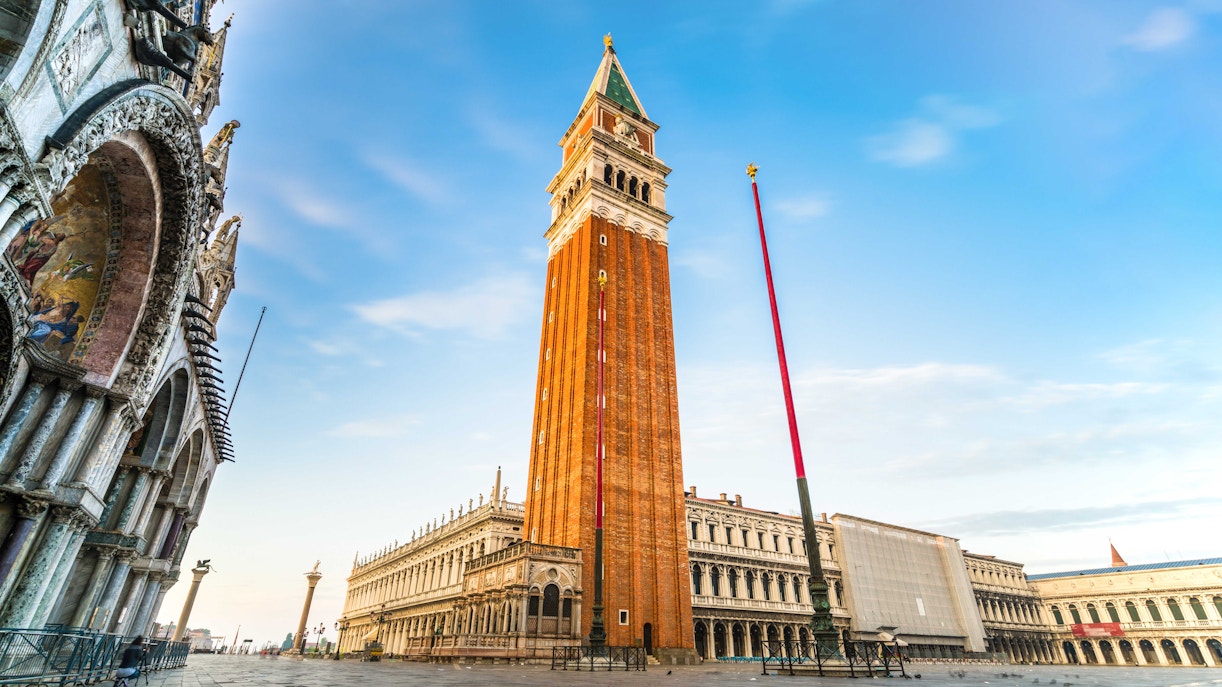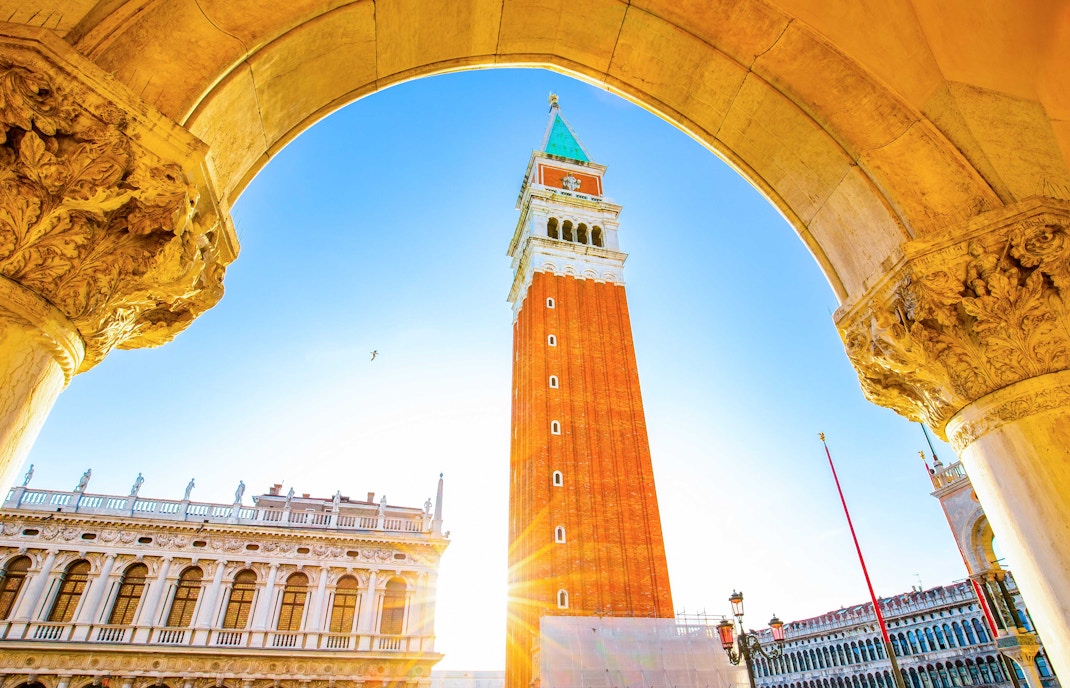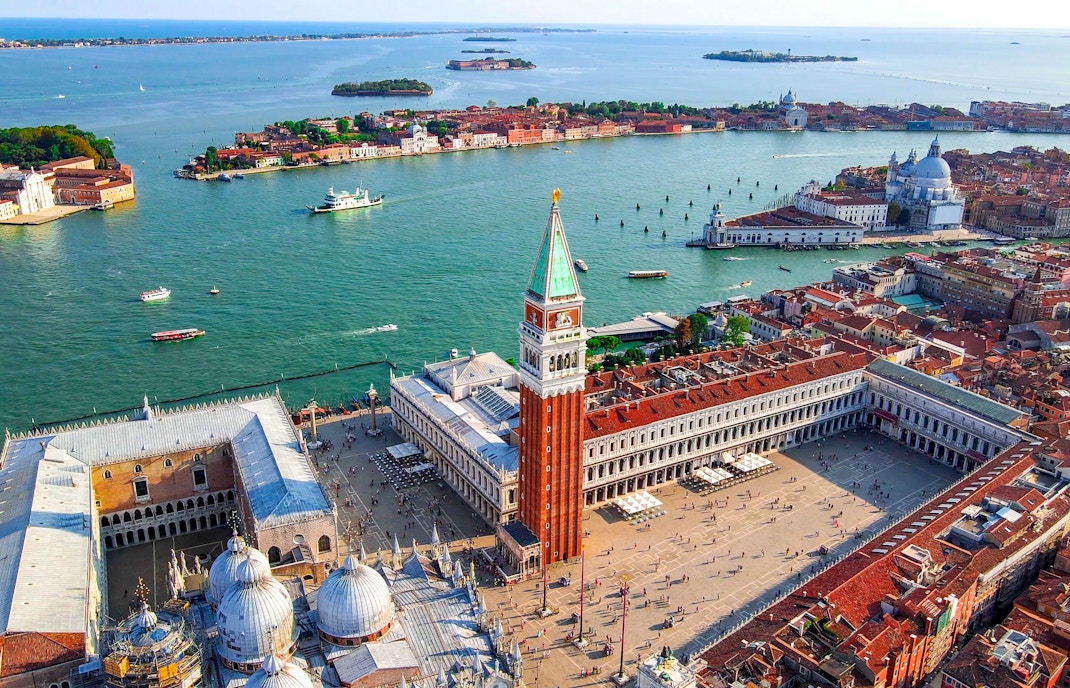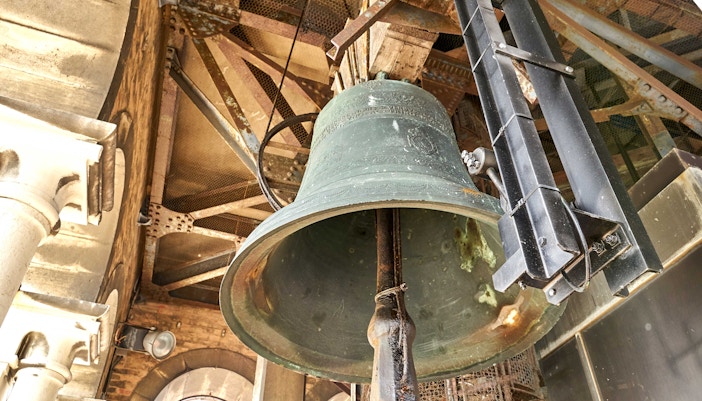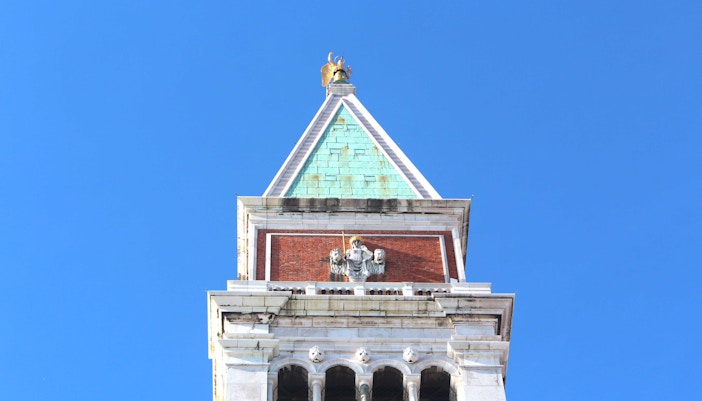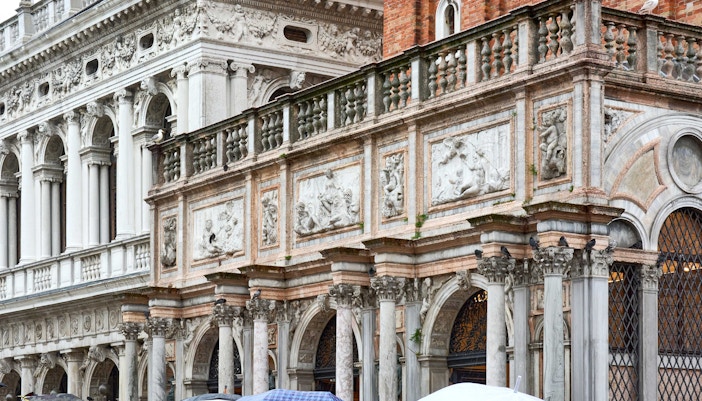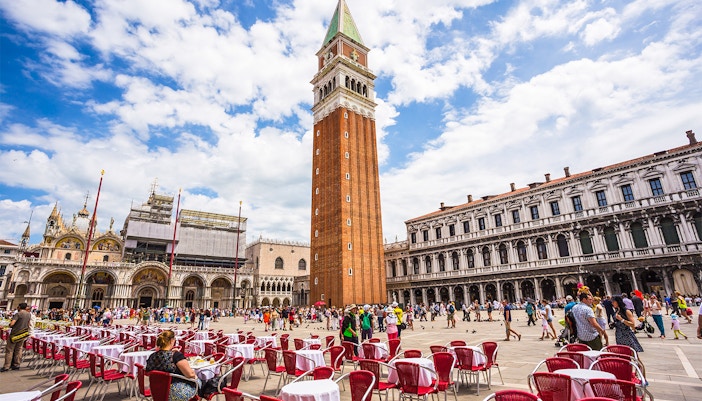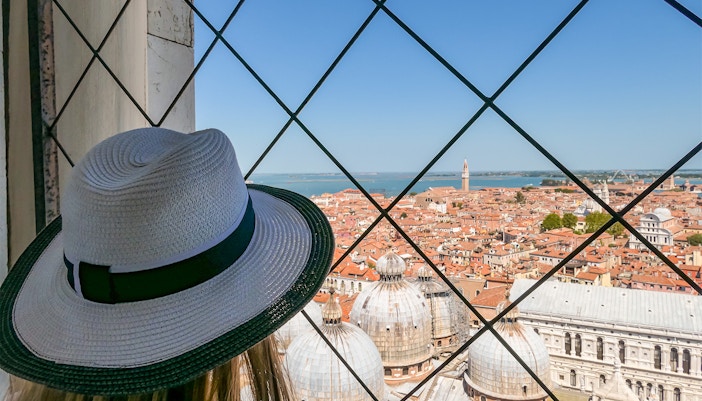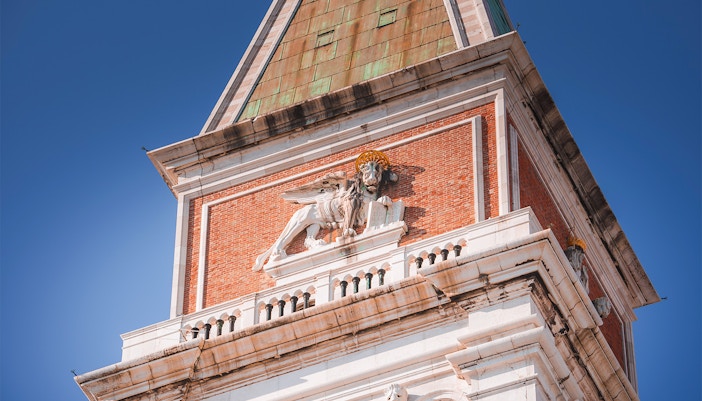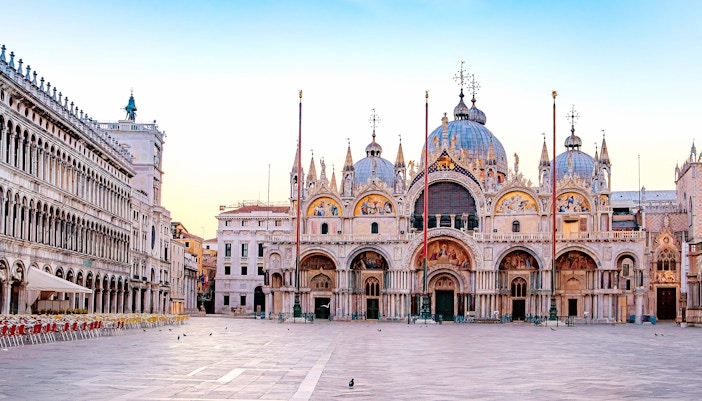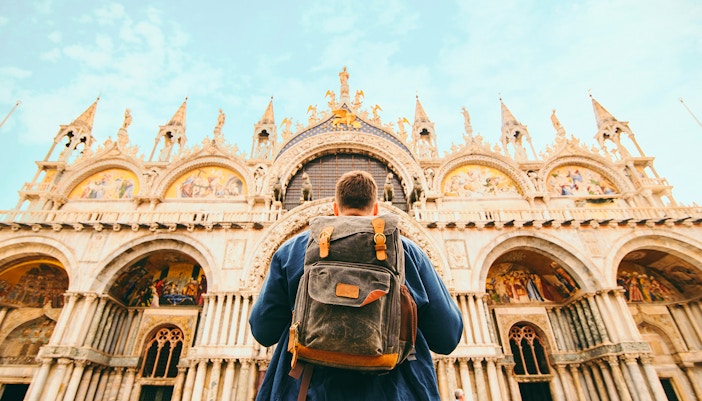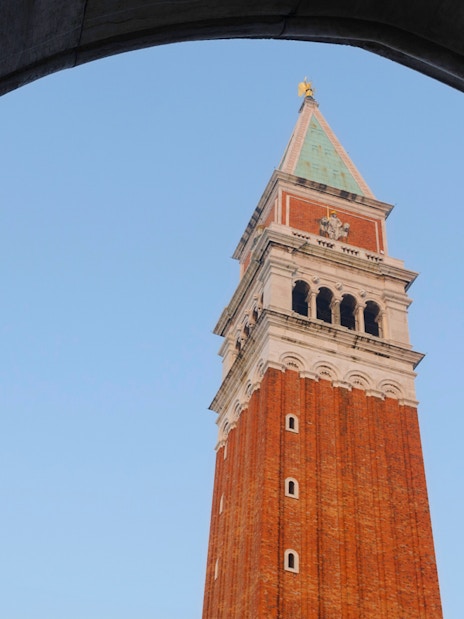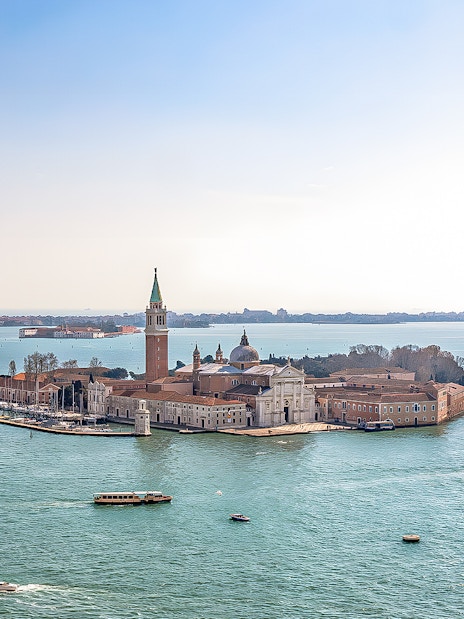History of St. Mark’s Bell Tower
Restoration and Preservation
Built in the 12th century, St. Mark's Campanile got its current form in the 16th century. The Belfry and spire were added along with a rotating platform having a statue of Archangel Gabriel.
Centuries later, on 14 July 1902, the tower collapsed because of construction work. The Municipal Administration vowed to rebuild the Campanile to its former glory, with work starting on 25 April 1903 and finishing nine years later. The rebuilt tower with more safety features and static stability was inaugurated on St. Mark’s day.
Many parts of the tower were reintegrated, including two sides of the dado above the belfry, the two moving Lions in Istria stone, and the embossed copper statue of the Archangel Gabriel.
Influence of the St. Mark’s Campanile
St. Mark’s Campanile’s unique construction has influenced several towers and buildings in Europe and beyond. Its distinctive Venetian Gothic style architecture, decorations, and statues have inspired Clock Tower in Prague, Czech Republic; Bell Tower of the Church of the Holy Cross, Belfry of Bruges, Belgium; Central Tower of Oxford University's Bodleian Library and Bell tower of the Old Town Hall in Munich, Germany.
Several churches and cathedrals worldwide, including the Cathedral of Notre Dame in Paris, France, are influenced by St. Mark’s Campanile.
St. Mark's Basilica history explained

